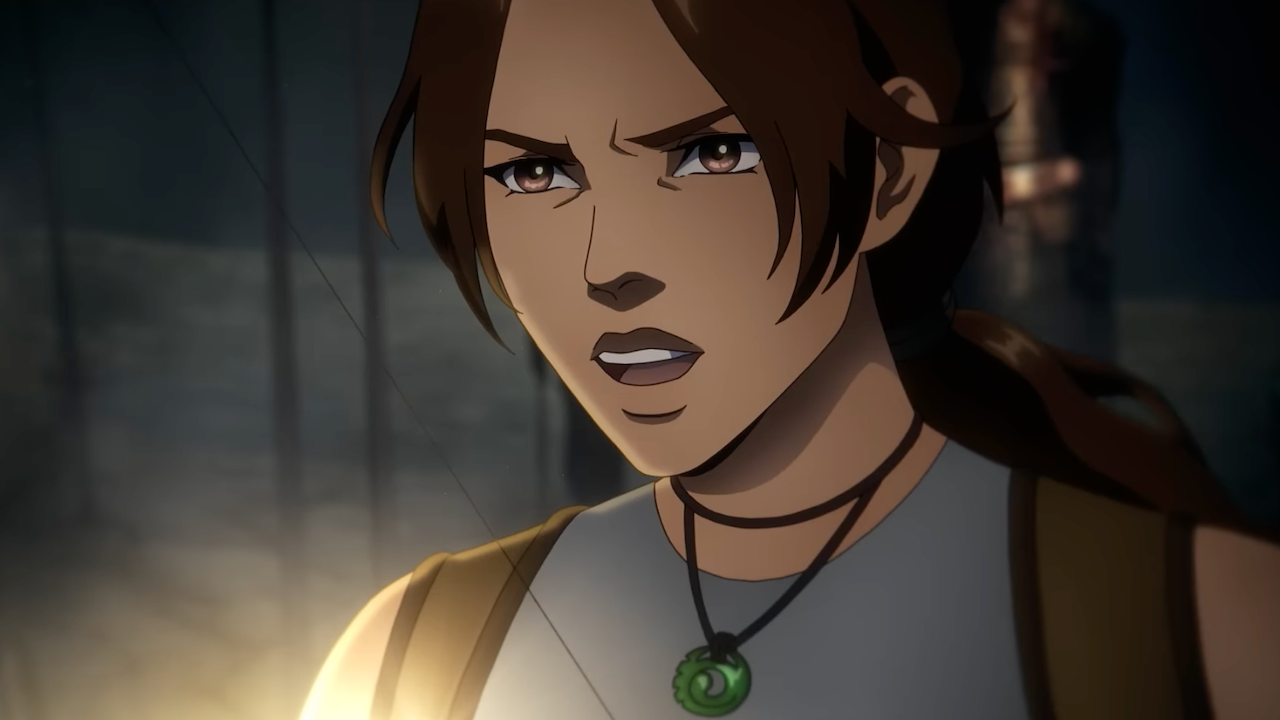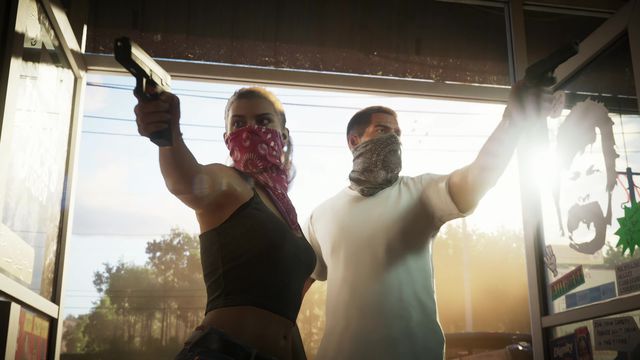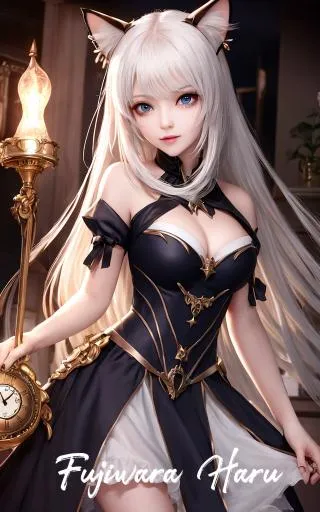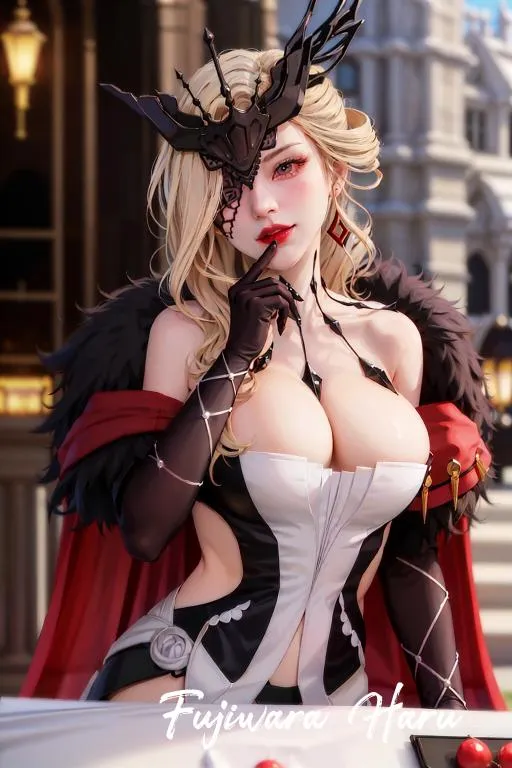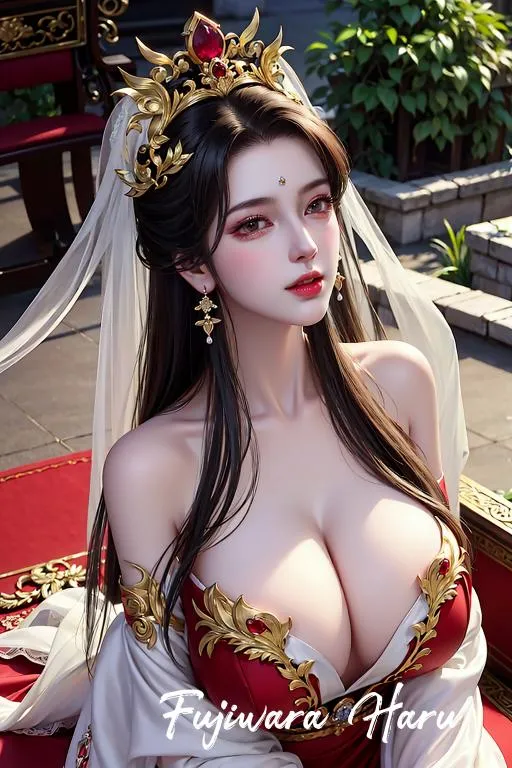From swiping ancient relics to pummeling any bad guys who stand in her way, everyone's favorite archeological adventurer is back to business in the upcoming animated series Tomb Raider: The Legend of Lara Croft. The eight-episode anime is set to premiere on Netflix Oct. 10.
Showrunner Tasha Huo answered all of our burning questions about how canon the story will be to the original games and if fans campaigning for Hayley Atwell to be cast in the titular role played a part in her securing the gig. Those on Twitter/X back in 2013 might recall that the Agent Carter actor retweeted several posts suggesting she play the adventure-seeking protagonist in a future film or TV show, though Atwell has since deleted her Twitter account.
Tomb Raider: The Legend of Lara Croft is being brought to the screen by Powerhouse Animation, the same studio that put out Castelvania on Netflix. The series is being produced by Legendary Pictures and Crystal Dynamics.
For those unfamiliar with the franchise, Crystal Dynamics launched a reboot of the game series with the release of 2013's Tomb Raider. Grouped with the two sequels that followed, Rise of the Tomb Raider and Shadow of the Tomb Raider, these three game entries comprise the Survivor Trilogy. The anime starts where the Survivor Trilogy ends and follows Lara as she returns home from her perilous adventures to locate a mysterious artifact stolen from Croft Manor.
Keep on reading for an inside look at the series with Huo. For even more Tomb Raider: The Legend of Lara Croft content, check out how fans reacted to hearing Hayley Atwell voice Lara Croft for the first time.
IGN: This is such a massive franchise; it spans over 25 years, so there's a lot of content to choose from. Did you mainly use the Survivor trilogy as a jumping off point for this series, or are there other Tomb Raider games or film adaptations that influenced the making of this series?
Tasha Huo: I had the whole canon in my head, because we were coming from the Survivor series, so you had to honor who [Lara Croft] was — that person that she was in those games — but move her into the person she was in the games where we all started playing — those early 90s games where she's just a very different person. And so it was really exciting to write to Lara becoming that person. "How does someone who is like Lara from the Survivor series transform into that person? What goes on to drive her to become that person?" [Those were] was just the best questions to have to deal with, and it was really exciting to work in more humor, which is what I really loved about her early days. Getting to kind of combine those two canons has been really fun.
I'm glad you mentioned the humor. One of my favorite moments in the pilot is when Lara makes a comment about how her dress has pockets. I thought that was so fun, because I feel like that's so on brand for what she would say in this day and age. I'm curious if there are any other creative liberties that you took in terms of re-imagining how this character would act when portrayed to a 2024 audience?
TH: That's a super interesting question. I haven't been asked that before. I really wanted to capture the Lara that, as a little girl, I really fell in love with, which was someone who takes no shit, who really stands up for herself in every scenario against any villain — man, woman, doesn't matter. She's going to do what she wants regardless of who's standing in front of her ... As we were writing, as were animating, it felt so important to show Lara as empowered at every step of the way. Even when she is at her low point, she is going to find that strength inside of her, and that always inspires me with her and inspired me in the show.
And then in terms of bringing it into now and away from the games, I also wanted to know more about her relationships. She's so alone in the games. You get a sense that she has people here and there, but she must care about people. And that was also, I think, part of bringing it into the now is how does this woman, who is this incredible badass and who can accomplish so much alone, how does she relate to people? How does she form friendships? And that doesn't have to make her vulnerable because she loves other people. So exploring that sort of dichotomy of being vulnerable with friends, but still being an incredible badass.
I love that. Especially because she is college age at this point, and that's kind of expected — that you're making friends at that point, figuring out your life and who you are — that's really cool to see depicted in this way.
TH: Yeah, I think it was fun to be able to have one scene where she does an incredible feat of strength or agility or what have you — the Lara thing — and then another scene where she's hugging a friend and is emotional with them. I think that's something we definitely wanted to explore in terms of Lara's womanhood. Because historically she's been written by men, so she has been kind of this cold figure, and I know she's not like that. So that was the exciting part to see sort of behind the veil of how she is in her everyday life.
Did you have any other female influences, maybe in the writers room with you or just people that you were talking to, in terms of opening up that door to be able to explore the more vulnerable side of Lara?
TH: There was two other women who wrote episodes as well, and just a lot of women in my life. My mom is an inspiration too, in a way, because she always is incredibly strong but also incredibly emotional, and we're often told that you can't be both. And I think, historically, Lara has not been both. So it's been nice to show that that doesn't make you weak; in fact, it makes you strong. It's not necessarily a huge theme we wanted to intentionally deal with, but I think it just comes through in the way we understood Lara to be.
It's also amazing that you got Hayley Atwell to portray the voice of this character. She's vocalized wanting to be able to play this character in some capacity since 2013. Was that kind in your head before you went into casting for this show, or was there maybe a specific moment where it clicked that she would be the perfect choice for this character?
TH: I actually had no idea that she had said that in 2013. That's amazing.
There's a whole bunch of tweets to back it up.
TH: You'll have to send that to me. No, I have just always loved her. I mean, I think Agent Carter really solidified to me her ability to be both incredibly dramatic and just completely carry scenes with her sort of tour de force acting while also bringing incredible comedic timing. Her action was amazing. It just felt so easy for her that she was my first choice for Lara in this stage of her life, where she's moving from this very serious woman into the confident, more fun-loving woman that she becomes. So I'm just grateful she said yes, because I didn't know what to do without her.
Once [Atwell] got on board, were there any parallels that you found in her performance as Agent Carter where you're like, "Okay, maybe this is something that I kind of want to bring into play" in your own series? Or do you see those two characters as entirely separate entities?
TH: I would say [Lara is] separate from Agent Carter, but I think what was funny is that we brought a lot of Hayley into the show. Because the more we realized how much of a badass [Atwell] was, the more it became, "If you're jumping out of a plane, Lara, this is sort of what you have to do," and then she would be like, "Oh, yeah, I just jumped out of a plane last week, so I got this."
Or, "Actually, this is how that would probably sound, because I just got punched in the face this last week." She's also recording Mission Impossible at the same time, and she's done a lot of action, and she is herself a very adventurous person. So it was really cool to see sort of the art and the real start to blend with her.
I'm also really curious about the choice of Netflix as the place where this series is being released. They're really stepping up their game with some of these video game adaptations like Arcane, Castlevania, and Cuphead. Did you take inspiration from any of these other Netflix video game adaptations in the making of this series?
TH: I think what's exciting about Netflix is that they are willing to put this kind of content on their platform and trust the artists and trust the people who have played these games, who love these games, to sort of know what the show should be. So it's been a great experience in the sense that the creativity and the fandom has led the way. I can't speak for their other shows, but having loved Castlevania and Arcane, it really does feel like they're made by fans. And I know, for instance, Powerhouse, who animated the show, they're all fans. And it's really cool because 50% of their animators are women, and many of them were fighting to be on the project because they had been raised by the game as well.
That's awesome.
TH: You can see it in their work, because it'll come back sometimes where you've written an action scene, but it comes back visually and you're like, "Oh, yeah, I know the exact level that you're referring to here, and you completely captured what her body was like in that video game moment." And it's just really cool to be able to work with fans and to work at a place that sort of allows that to come through.
Were there any specific features of the video games, maybe any Easter eggs, that you were really set on bringing into this series?
TH: There are a lot of Easter eggs in the show, so whenever anybody watches, pay attention to even just what's in the background, because we filled it with all the things that we've loved from the games.
But for me, the most fun in terms of Easter eggs and references to the game was really capturing ... just the way [Lara] moves in a video game, the way she moves in action, how dexterous she is, how she knows every fight style out there and can just kind of bust it out at a moment's notice. So capturing the way it felt to play her in those action moments became very important to me. And so hopefully you'll see a lot of references to just certain move sets that she had in the video game that are very unique to her.
Did you talk to any of the actual game designers in terms of how you would have those movements be animated? Or was that just based on your team's collective experience playing through and knowing what looks and feels right?
TH: Well, the beauty is when the animators and the director read the script, they knew exactly what I was referring to, so there didn't need to be a lot of conversation. They're like, "Oh, that's that moment. I got it."
There's only been one other time where this character has shown up in an animated format. What was that like exploring that format, and why did you want to go that route rather than doing something live-action?
TH: There's something really cool about animation in that it can feel huge, and this show was always going to be a travel show where, because that's who Lara is, every episode she's going to be someplace new, someplace exciting, someplace big. Our background artists were really put to the test in this show, and I think it pays off. And so in animation, you get to explore more worlds and have bigger set pieces that [live-action] production budgets would forbid.
There's something very exciting about being able to, in a Tomb Raider show, dream as big as you wanted, and for the animators to say, "Yeah, sure, no problem." There was never a, "No, we can't go to this location," or "This set piece is too crazy." It was, "How do we push it even more because we're in animation?" So it's a really cool place for [Lara] to be, and hopefully we'll just continue to push that even more.
Animation also seems like it would expand the demographic that this show can appeal to. Lara's a pretty brutal character, and there's some brutal things that happen, but I think seeing it animated makes the content more approachable for a wider audience of people. Was that something that was in your head as well?
TH: Yeah, the hope was always that everyone could watch it. If you played this game and you have young kids, you could sit and watch it and enjoy this world with them. It's sort of a gateway drug to playing the video games if you're younger, but also I definitely wrote it for us, for adults, for people who played the games their whole lives and really enjoyed it. And so the themes are very adult. There's still a lot of violence, but the animation, you're right, does allow for it to not feel as graphic, and so it does create a bigger space for more people to enjoy, which hopefully they do. I'm writing it for little girls as much as I'm writing it for big girls.
There's also a live-action Tomb Raider series currently in the works for Prime Video. Have you had any opportunities to talk with Phoebe Waller-Bridge about her own take on the franchise, and the differences or maybe similarities of your respective interpretations?
TH: Our shows are going to be, I think, very different. Which is great, because Phoebe is going to do her amazing thing, and I can't wait to watch it, but I think allowing it to be different is going to be very fun. [The Legend of Lara Croft] is going to work on creating this bridge with Lara, and Phoebe's going to capture a whole other element of her. I think we'll bring in other audiences too, who may be averse to animation for some reason, and then hopefully [the live-action show] will bring them to this show, and so their canon of Lara can just continue to expand. As a fan, I'm just stoked that there's more Tomb Raider content out there.
Do you think that this series has the potential to have any bearing on future content that comes out based off of this franchise, whether it be further games or other adaptations?
TH: I'm just hoping that people like this season, and I'll see where it goes ... We put our heart and soul into it, and I have no expectations beyond that. If it does grow into something bigger, amazing. If not, I just hope that people get the joy from the season as much as we put into it.
Thank you so much for speaking with me. It was a pleasure talking to you.
TH: Ditto ... Good to meet you.
Katie Reul is a freelance journalist whose entertainment reporting has been featured in IGN and Variety.
